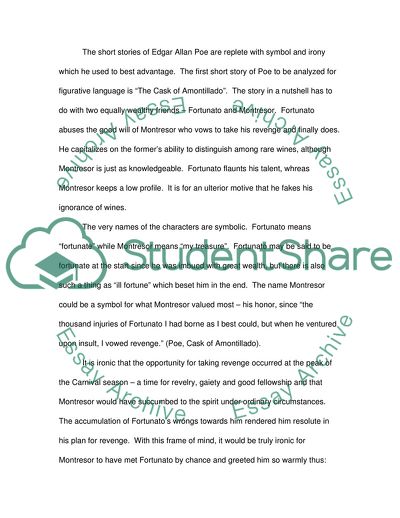Cite this document
(Symbol and Irony in the Short Story Assignment Example | Topics and Well Written Essays - 2250 words, n.d.)
Symbol and Irony in the Short Story Assignment Example | Topics and Well Written Essays - 2250 words. https://studentshare.org/literature/1718360-discuss-irony-and-symbolism-in-edgar-allan-poes-the-black-cat-and-the-cask-of-amontillado
Symbol and Irony in the Short Story Assignment Example | Topics and Well Written Essays - 2250 words. https://studentshare.org/literature/1718360-discuss-irony-and-symbolism-in-edgar-allan-poes-the-black-cat-and-the-cask-of-amontillado
(Symbol and Irony in the Short Story Assignment Example | Topics and Well Written Essays - 2250 Words)
Symbol and Irony in the Short Story Assignment Example | Topics and Well Written Essays - 2250 Words. https://studentshare.org/literature/1718360-discuss-irony-and-symbolism-in-edgar-allan-poes-the-black-cat-and-the-cask-of-amontillado.
Symbol and Irony in the Short Story Assignment Example | Topics and Well Written Essays - 2250 Words. https://studentshare.org/literature/1718360-discuss-irony-and-symbolism-in-edgar-allan-poes-the-black-cat-and-the-cask-of-amontillado.
“Symbol and Irony in the Short Story Assignment Example | Topics and Well Written Essays - 2250 Words”. https://studentshare.org/literature/1718360-discuss-irony-and-symbolism-in-edgar-allan-poes-the-black-cat-and-the-cask-of-amontillado.


